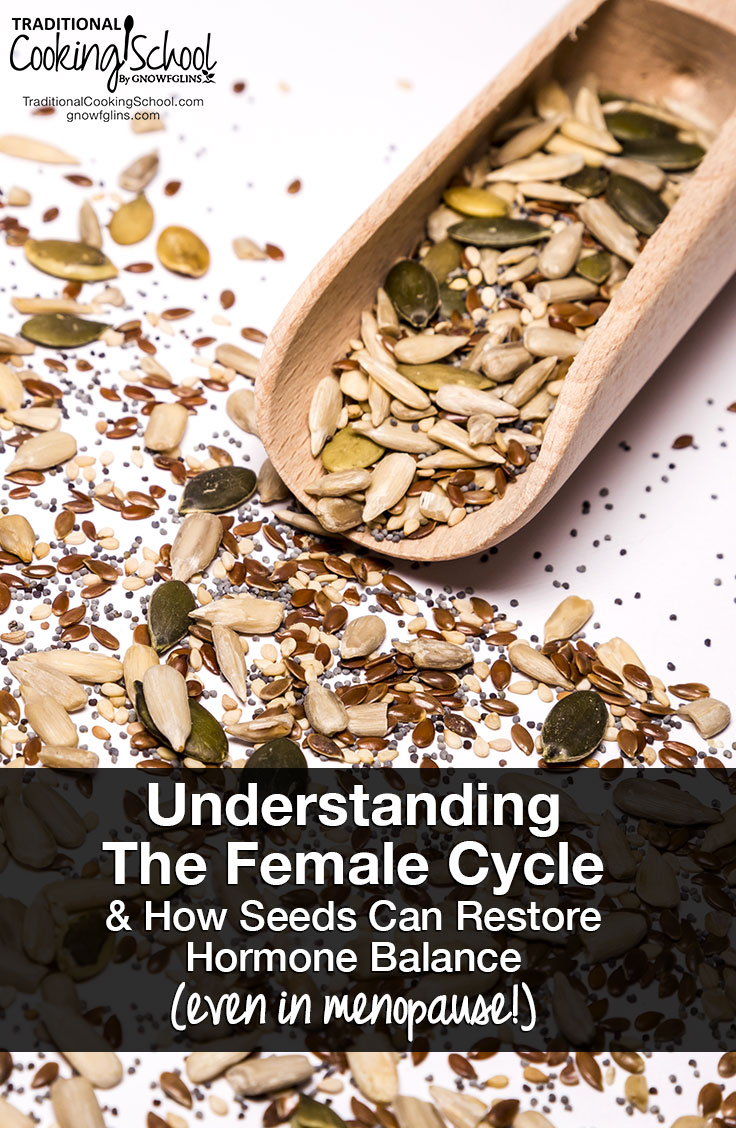

Remember – anyone can benefit from seed cycling, no matter where you are in your hormonal journey. It takes time to reestablish hormone balance but the benefits you gain will be long lasting. This may seem like a long time, but just remember that your hormone imbalance didn’t happen overnight. You should definitely notice a decrease in your symptoms after 3-4 months of seed cycling. It typically takes a few cycles of the seed rotation to notice an effect. perimenopausal and postmenopausal women: start any day and do each seed rotation for 2 weeks.women with infrequent or no periods: start day 1 on the first day of the new moon.women with monthly cycles – start on day 1 of your cycle (first day of your period).The time in which you choose to start seed cycling depends on your current hormone status:

Seed Rotatation for Menstrual Cycle When should I start my seed rotation? Here’s a chart to help visualize the monthly seed cycling rotation: Make sure to grind the seeds daily or grind up a weeks worth of seeds and store them in the fridge in an air tight container for no longer than 1 week. You can incorporate them into a smoothie, soup, salad, oatmeal, or any other food of your choosing. Use this guide below to start adding seeds to your diet at the appropriate times. Seed cycling is a non-invasive and cost effective strategy to help restore our own natural hormone production. These issues are not normal and they can be improved once we achieve the correct hormone balance. Issues such as irregular cycles, painful periods, infertility, fibroids, PCOS, PMS, acne, tender breasts, weight gain, and mood swings are all very common in our world today and many women are suffering through them daily due to hormone dysregulation. Many of us have experienced symptoms of hormone imbalance. Lifestyle factors like stress, exposure to environmental toxins, food sensitivities, alcohol and coffee consumption, poor digestion, and poor diets consisting of hormone laden meats and processed foods can lead to the dysregulation of natural hormone production, causing some women to have irregular periods or no periods at all. However, this is not the case for most women of reproductive age today. Typically our estrogen and progesterone rise and fall at the appropriate times throughout our cycles without any intervention and we have normal 28-30 day menstrual cycles. The regularity of our menstrual cycles depends on several different factors.

Why do some women have irregular menses when others don’t? These seeds provide zinc and selenium, along with essential fatty acids and vitamin E to increase progesterone levels. This is when you switch to daily sunflower and sesame seed intake to promote progesterone production.

After ovulation, the body starts to produce progesterone from day 15 until day 28-30 when we typically have our menstrual bleed. The lignans found in these seeds also help to bind excess estrogens and remove them from the body. The flax and pumpkin seeds help to promote estrogen production and increase the ratio of beneficial 2-hydroxyestrone to harmful 16-alpha-hydroxyestrone estrogen metabolites. You start by eating ground flaxseed and pumpkin seeds from the first day of your period through ovulation, days 1-14 of your menstrual cycle. Seed cycling, also known as seed rotation, helps to rebalance hormones by promoting estrogen and progesterone production during particular times of your menstrual cycle when they would naturally rise. Seed cycling is a simple and effective alternative method that will help to encourage natural hormone production and detoxification in order to reestablish our body’s natural monthly hormonal rhythm. Most women have been told that they need to take a birth control pill in order to regulate their menstrual cycle. Attention, ladies! Do you struggle with irregular menstrual cycles? Hormonal acne? PCOS? Infertility? PMS? Low hormones due to menopausal changes? If you answered yes to any of the above questions, seed cycling may be the missing link to helping you balance your hormones naturally.


 0 kommentar(er)
0 kommentar(er)
